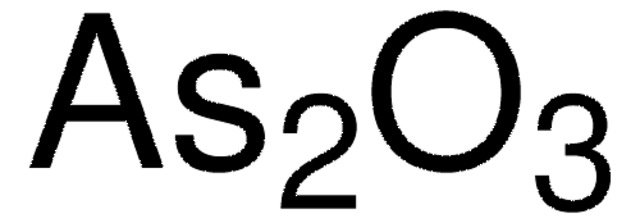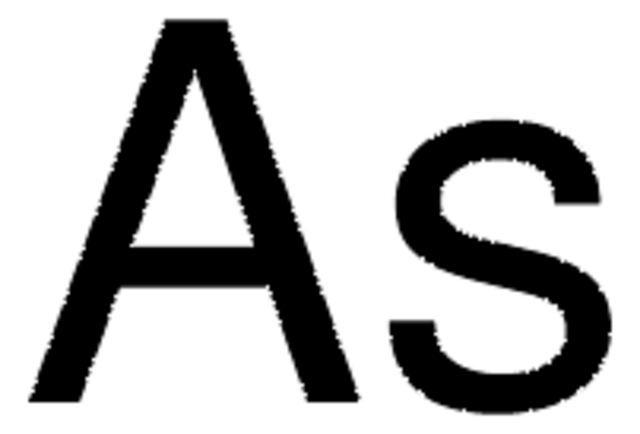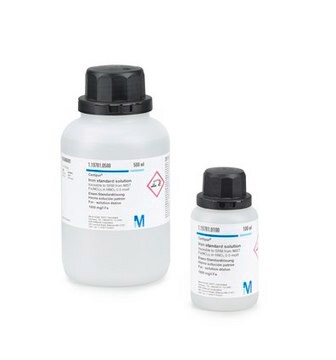S9663
Natriumarsenat, zweibasisch Heptahydrat
ACS reagent, ≥98%
Synonym(e):
Di-Natriumhydrogenarsenat Heptahydrat, Dinatriumhydrogenarsenat Heptahydrat
About This Item
Empfohlene Produkte
Qualität
ACS reagent
Assay
≥98%
98.0-102.0%
Form
powder
Verunreinigungen
≤0.005% Insoluble matter
pH-Wert
8.5-9 (25 °C, 50 g/L)
Anionenspuren
arsenite (As2O3): ≤0.01%
chloride (Cl-): ≤0.001%
nitrate (NO3-): ≤0.005%
sulfate (SO42-): ≤0.01%
Kationenspuren
Fe: ≤0.001%
heavy metals (as Pb): ≤0.002%
SMILES String
O.O.O.O.O.O.O.[Na+].[Na+].O[As]([O-])([O-])=O
InChI
1S/AsH3O4.2Na.7H2O/c2-1(3,4)5;;;;;;;;;/h(H3,2,3,4,5);;;7*1H2/q;2*+1;;;;;;;/p-2
InChIKey
KOLXPEJIBITWIQ-UHFFFAOYSA-L
Suchen Sie nach ähnlichen Produkten? Aufrufen Leitfaden zum Produktvergleich
Verwandte Kategorien
Anwendung
Signalwort
Danger
H-Sätze
Gefahreneinstufungen
Acute Tox. 3 Inhalation - Acute Tox. 3 Oral - Aquatic Acute 1 - Aquatic Chronic 1 - Carc. 1A
Lagerklassenschlüssel
6.1A - Combustible acute toxic Cat. 1 and 2 / very toxic hazardous materials
WGK
WGK 3
Flammpunkt (°F)
Not applicable
Flammpunkt (°C)
Not applicable
Analysenzertifikate (COA)
Suchen Sie nach Analysenzertifikate (COA), indem Sie die Lot-/Chargennummer des Produkts eingeben. Lot- und Chargennummern sind auf dem Produktetikett hinter den Wörtern ‘Lot’ oder ‘Batch’ (Lot oder Charge) zu finden.
Besitzen Sie dieses Produkt bereits?
In der Dokumentenbibliothek finden Sie die Dokumentation zu den Produkten, die Sie kürzlich erworben haben.
Unser Team von Wissenschaftlern verfügt über Erfahrung in allen Forschungsbereichen einschließlich Life Science, Materialwissenschaften, chemischer Synthese, Chromatographie, Analytik und vielen mehr..
Setzen Sie sich mit dem technischen Dienst in Verbindung.









